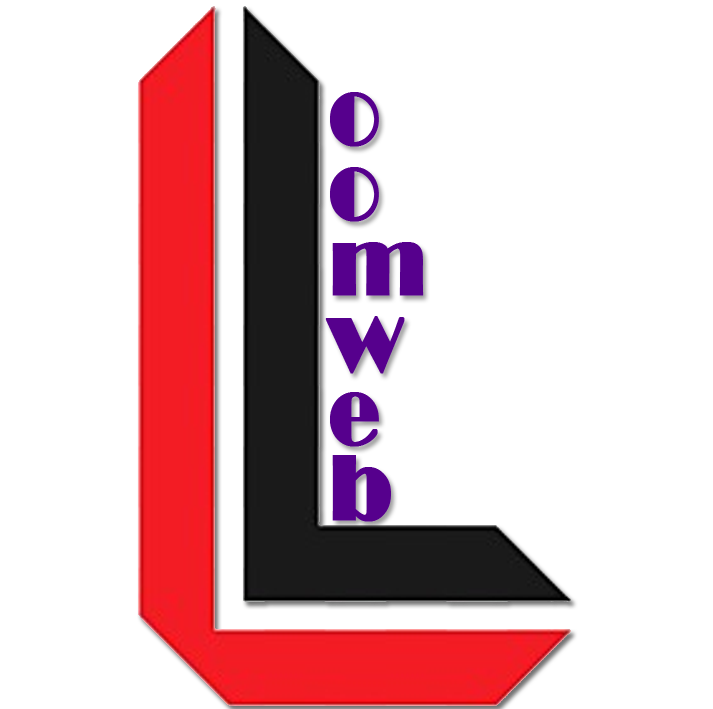Connecticut Personal Injury Lawyer expertise is crucial when navigating the complexities of personal injury claims in the state. Understanding the nuances of Connecticut’s legal system, including statute of limitations and the process of filing a lawsuit, is paramount for achieving a favorable outcome. This guide provides a comprehensive overview of personal injury law in Connecticut, from selecting the right lawyer to negotiating settlements and, if necessary, preparing for trial.
We will explore various aspects, including the types of personal injury cases commonly handled, the different types of damages recoverable, and the crucial role of insurance companies in the claims process. We’ll also address common injuries like car accidents and slip and falls, offering insights into the legal process, client responsibilities, and resources for further information. This detailed explanation aims to empower individuals to make informed decisions and protect their rights.
Understanding Damages
In a Connecticut personal injury case, understanding the types of damages you can recover is crucial for pursuing a successful claim. Successfully navigating the legal process requires a clear grasp of both economic and non-economic damages, and how these factors influence the overall value of your claim. This section will illuminate these aspects, providing examples to illustrate their potential impact on settlement negotiations.
Economic Damages
Economic damages represent the quantifiable financial losses resulting from your injuries. These are relatively straightforward to document and calculate, often supported by receipts, bills, and other verifiable evidence. The goal is to compensate you for the actual monetary costs incurred due to the accident.
- Medical Expenses: This includes all past and future medical bills, such as doctor visits, hospital stays, surgeries, physical therapy, medication, and any assistive devices. For example, a broken leg might result in thousands of dollars in hospital bills, surgery costs, and ongoing physical therapy sessions.
- Lost Wages: This covers income lost due to missed work because of your injuries. Documentation such as pay stubs and tax returns can support these claims. For instance, a construction worker unable to work for six months due to a back injury would have significant lost wages to claim.
- Property Damage: This encompasses repairs or replacement costs for damaged vehicles or personal property. Repair estimates and insurance claims can be used as evidence. A car totaled in an accident would fall under this category.
Non-Economic Damages
Non-economic damages are harder to quantify, as they represent the intangible losses resulting from your injuries. These damages compensate for the pain, suffering, and emotional distress experienced as a consequence of the accident. They often form a significant portion of a personal injury settlement.
- Pain and Suffering: This encompasses the physical pain and emotional distress caused by the injury. The severity and duration of the pain, along with its impact on daily life, influence the value assigned to this category. A chronic back injury causing constant pain would command a higher value than a minor sprain.
- Loss of Consortium: This refers to the loss of companionship, intimacy, and support experienced by a spouse or family member due to the injured person’s condition. This damage is often awarded to a spouse whose partner’s injuries significantly impact their relationship.
- Emotional Distress: This includes anxiety, depression, and other psychological consequences stemming from the accident and its aftermath. Evidence such as therapy records and medical evaluations can support claims for emotional distress.
Factors Influencing Claim Value
Several factors significantly impact the value of a personal injury claim in Connecticut. These factors interact and often influence each other, resulting in a complex evaluation process.
- Severity of Injuries: The more severe and lasting the injuries, the higher the potential settlement amount. A permanent disability will generally result in a much larger settlement than a minor injury.
- Liability: The degree to which the other party is at fault for the accident directly affects the settlement. Clear liability significantly strengthens the claim. Cases where liability is contested often lead to longer and more complex legal proceedings.
- Medical Documentation: Comprehensive and detailed medical records, including doctor’s notes, test results, and treatment plans, are essential in establishing the extent of injuries and related expenses.
- Plaintiff’s Credibility: The plaintiff’s honesty and cooperation throughout the legal process are crucial. Inconsistencies or a lack of cooperation can weaken the case and reduce the settlement amount.
- Insurance Coverage: The available insurance coverage limits significantly impact the potential settlement. Higher policy limits increase the potential for a larger settlement.
Examples of Damages and Settlement Amounts
It’s impossible to provide exact figures for settlement amounts, as each case is unique. However, we can provide illustrative examples. A case involving a broken leg requiring surgery, resulting in several weeks of lost wages and ongoing physical therapy, might settle for tens of thousands of dollars. A case involving a serious car accident leading to permanent disability and significant medical expenses could result in a settlement in the hundreds of thousands or even millions of dollars, depending on the specifics of the case and the severity of the injuries. Conversely, a minor fender bender with only minor injuries and minimal medical expenses may result in a settlement of a few thousand dollars.
The Legal Process
Navigating a personal injury claim in Connecticut can feel overwhelming, but understanding the legal process can empower you to make informed decisions. This section Artikels the typical steps involved, from your initial contact with an attorney to a potential trial or settlement. We’ll also discuss the role of insurance companies and the crucial discovery phase.
The process generally begins with an initial consultation. During this meeting, you’ll discuss the details of your accident and injuries with your attorney. They will assess the viability of your case and explain the potential legal strategies. Following the consultation, your attorney will begin gathering evidence to support your claim. This includes medical records, police reports, witness statements, and photographs of the accident scene. The attorney will then file a lawsuit against the at-fault party, outlining your injuries and damages.
Insurance Companies’ Role in Personal Injury Claims
Insurance companies play a significant role in personal injury claims. They represent the interests of the at-fault party and aim to minimize the amount they pay out. They will investigate the accident, interview witnesses, and review medical records to assess liability and the extent of your injuries. They may offer a settlement at any point during the process, but this offer is often significantly lower than the actual value of your claim. Your attorney will negotiate with the insurance company on your behalf, advocating for a fair settlement that reflects your damages. If a settlement cannot be reached, the case may proceed to trial.
The Discovery Process
The discovery process is a critical phase in personal injury litigation. It involves both sides exchanging information relevant to the case. This exchange may include interrogatories (written questions), depositions (oral testimony under oath), requests for documents (medical records, police reports), and requests for admissions (statements of fact that the opposing party must admit or deny). The purpose of discovery is to uncover all relevant facts and evidence, allowing both sides to prepare their case thoroughly. A thorough discovery process often leads to a more accurate assessment of liability and damages, potentially influencing the outcome of the case, whether it ends in settlement or trial. For example, a thorough review of medical records during discovery might reveal additional injuries not initially apparent, strengthening the plaintiff’s case. Similarly, depositions of witnesses can provide crucial testimony to support the plaintiff’s version of events.
Common Injuries: Connecticut Personal Injury Lawyer
Personal injuries resulting from accidents and negligence are unfortunately common in Connecticut. Understanding the types of injuries frequently encountered is crucial for individuals seeking legal recourse. This section details some of the most prevalent injury categories, their typical causes, and the kinds of damages individuals may pursue.
Common Injury Types in Connecticut
The following table summarizes common personal injury types in Connecticut, outlining typical causes and potential damages. It’s important to remember that the specific causes and damages can vary significantly depending on the individual circumstances of each case. This information is for general understanding and should not be considered legal advice.
| Injury Type | Common Causes | Typical Damages |
|---|---|---|
| Car Accidents | Negligent driving (speeding, distracted driving, drunk driving), road hazards, faulty vehicle mechanics. | Medical expenses (hospital bills, surgery, physical therapy), lost wages, pain and suffering, property damage, emotional distress. |
| Slip and Falls | Wet floors, uneven pavement, inadequate lighting, poorly maintained stairs, tripping hazards. Often occur in businesses or on private property. | Medical expenses (broken bones, head injuries, soft tissue damage), lost wages, pain and suffering, loss of consortium (if the injury affects the injured person’s relationship with their spouse). |
| Medical Malpractice | Misdiagnosis, surgical errors, medication errors, failure to obtain informed consent, negligence in post-operative care. | Medical expenses (corrective surgeries, ongoing treatment), lost wages, pain and suffering, emotional distress, loss of future earning capacity. |
| Motorcycle Accidents | Negligent driving by other motorists, road hazards, motorcycle malfunctions. Often resulting in severe injuries due to lack of protection. | Medical expenses (often extensive due to the severity of injuries), lost wages, pain and suffering, disfigurement, rehabilitation costs, loss of enjoyment of life. |
| Workplace Injuries | Unsafe working conditions, inadequate safety equipment, employer negligence in providing a safe work environment. | Medical expenses, lost wages, pain and suffering, permanent disability benefits, workers’ compensation benefits (in some cases). |
Negotiation and Settlement
Negotiating a settlement with an insurance company after a personal injury accident in Connecticut can be a complex process. The goal is to obtain fair compensation for your medical bills, lost wages, pain and suffering, and other damages. This involves a strategic approach that balances aggressive advocacy with a realistic understanding of the insurance company’s position.
The negotiation process typically begins with a demand letter from your attorney to the insurance company. This letter Artikels the details of your accident, injuries, and the damages you’ve suffered, along with supporting documentation such as medical records and bills. The insurance adjuster will then review the demand and may offer a settlement. This initial offer is often significantly lower than what your attorney believes is fair. Subsequent negotiations involve back-and-forth communication, with your attorney presenting arguments and evidence to justify a higher settlement amount, and the insurance adjuster attempting to minimize their payout. This process may involve several offers and counter-offers before a mutually agreeable settlement is reached, or the case proceeds to litigation.
Strategies for Maximizing Settlement Amounts
Several strategies can be employed to increase the likelihood of a favorable settlement. Strong evidence supporting the extent and severity of your injuries is crucial. This includes detailed medical records, doctor’s statements, and possibly expert witness testimony from specialists. Quantifying your economic damages – medical expenses, lost wages, and future medical needs – is essential. Detailed financial records and projections are key to demonstrating the true cost of your injuries. Furthermore, documenting the impact of the accident on your daily life, including physical limitations and emotional distress, can significantly strengthen your case. This can be done through personal statements, witness accounts, and therapy records. Finally, a skilled attorney can leverage their experience and knowledge of insurance company tactics to negotiate a more favorable settlement. They understand the nuances of insurance law and can effectively present your case to maximize your compensation. For instance, an attorney might highlight the insurance company’s liability by presenting evidence of negligence and the other driver’s fault. They might also point out inconsistencies in the insurance adjuster’s arguments or the company’s initial offer, using this to support their negotiation strategy. A successful negotiation often relies on a strong case built upon compelling evidence and skillful legal representation.
Going to Trial
Going to trial in a Connecticut personal injury case is a significant step, representing the culmination of extensive investigation, negotiation, and preparation. It’s a formal process governed by strict rules of evidence and procedure, demanding a high level of legal expertise and strategic planning. While settlement is always preferred, sometimes litigation is unavoidable to secure a just outcome for the injured party.
The decision to proceed to trial is not taken lightly. It involves a thorough assessment of the strengths and weaknesses of the case, the potential costs involved, and the likely outcome based on the evidence and the jurisdiction’s legal precedents. A comprehensive evaluation of the potential risks and rewards is crucial before committing to trial.
Trial Preparation
Preparing for a personal injury trial in Connecticut is a meticulous process involving several key stages. This includes the thorough review and organization of all evidence, witness preparation, and the crafting of opening and closing statements. The legal team will work closely with expert witnesses to ensure their testimony is clear, concise, and persuasive. Mock trials may be conducted to anticipate the opposing counsel’s arguments and refine the trial strategy. Detailed timelines and schedules are developed to manage the logistics of presenting evidence and witnesses effectively. The objective is to present a compelling narrative that clearly demonstrates the defendant’s liability and the extent of the plaintiff’s damages.
Presentation of Evidence
Evidence plays a pivotal role in a personal injury trial. This can include medical records, police reports, photographs of the accident scene, witness testimonies, and expert opinions. Connecticut follows specific rules of evidence, which dictate what types of evidence are admissible and how they are presented. For instance, medical records must be properly authenticated to ensure their reliability. Photographs must be shown to accurately reflect the scene at the time of the accident. The attorney must strategically present the evidence to build a cohesive and convincing case. Failure to adhere to the rules of evidence can result in the exclusion of crucial evidence and weaken the case significantly. For example, hearsay evidence is generally inadmissible unless it falls under a recognized exception.
Role of Witnesses
Witnesses are crucial in providing firsthand accounts of the events leading to the injury. This can include eyewitnesses to the accident, medical professionals who treated the plaintiff, and experts who can provide opinions on various aspects of the case, such as causation or the extent of the plaintiff’s injuries. Before trial, witnesses are thoroughly prepared to ensure their testimony is consistent, clear, and persuasive. The attorneys will conduct mock cross-examinations to prepare witnesses for the rigorous questioning they can expect from the opposing counsel. The credibility of witnesses is paramount; any inconsistencies or weaknesses in their testimony can be exploited by the opposing counsel. The presentation of credible and compelling witness testimony is essential to successfully proving the elements of the claim.
Conducting the Trial
The trial itself follows a structured format, beginning with jury selection, followed by opening statements from both sides. The plaintiff presents their case first, calling witnesses and presenting evidence to prove their claims. The defendant then has the opportunity to present their case, potentially calling their own witnesses and presenting evidence to refute the plaintiff’s claims. Following the presentation of evidence, both sides deliver closing arguments summarizing their case and urging the jury to rule in their favor. The jury then deliberates and renders a verdict, determining liability and damages. The judge oversees the proceedings, rules on objections, and instructs the jury on the applicable law. The process is rigorous, demanding a high level of legal skill and courtroom experience.
Client Responsibilities
Partnering with a personal injury lawyer requires a collaborative effort. Your active participation is crucial for a successful outcome. Understanding your responsibilities ensures a smooth and efficient legal process. Open communication is key to achieving the best possible results for your case.
Your role extends beyond simply hiring an attorney; it involves actively contributing to the progress of your case. This includes promptly providing necessary information and cooperating fully with your lawyer’s instructions.
Providing Accurate and Complete Information
Providing your lawyer with accurate and complete information is paramount. This includes details about the accident, your injuries, medical treatment, lost wages, and any other relevant information. Incomplete or inaccurate information can significantly hinder the progress of your case and potentially weaken your claim. For example, failing to disclose a pre-existing condition that may have been aggravated by the accident could negatively impact the settlement or jury verdict. Be prepared to provide documentation such as medical records, police reports, and employment records to support your claims.
Maintaining Open Communication, Connecticut personal injury lawyer
Open and consistent communication with your lawyer is essential. This means promptly returning phone calls and emails, responding to requests for information, and keeping your lawyer updated on any changes in your situation. Regular communication ensures your lawyer is fully informed and can effectively represent your interests. For instance, if your medical condition changes or you experience a setback in your recovery, immediately inform your lawyer so they can adjust their strategy accordingly. Ignoring communication could lead to missed deadlines and jeopardize the outcome of your case.
Following Your Lawyer’s Instructions
Following your lawyer’s instructions is crucial for the successful prosecution of your case. This includes attending scheduled appointments, providing requested documents, and adhering to deadlines. Failure to comply with your lawyer’s instructions can result in delays and potentially compromise your case. For example, missing a court date or failing to submit crucial evidence on time could negatively affect the judge’s perception of your case. Trust your lawyer’s expertise and follow their guidance diligently.
Honesty and Transparency
Maintaining honesty and transparency throughout the legal process is vital. This includes being truthful in all your communications with your lawyer and the opposing party. Providing false information can have serious legal consequences, including jeopardizing your claim and potentially leading to legal sanctions. Always be truthful and accurate in your statements, even if it might seem unfavorable initially. Your lawyer is there to help navigate the complexities of your case, and their strategy relies on the accuracy of the information provided.
Resources for Further Information
Navigating the complexities of personal injury law can be challenging. To assist you in your understanding and research, we’ve compiled a list of reputable organizations and websites that offer valuable information specific to Connecticut personal injury law. These resources provide additional context, legal explanations, and support for those seeking to learn more about their rights and options.
Connecticut Judicial Branch Website
The Connecticut Judicial Branch website provides access to court records, statutes, and general information about the state’s legal system. This is an invaluable resource for understanding court procedures, rules of evidence, and the overall legal framework within which personal injury cases are handled. Searching for specific case law related to precedents in personal injury cases is also possible through their online resources. The website is user-friendly and offers a search function to easily locate relevant information.
Connecticut Bar Association
The Connecticut Bar Association (CBA) website offers a wealth of resources, including lawyer referral services. While they don’t provide legal advice directly, the CBA can connect you with qualified attorneys specializing in personal injury law in Connecticut. Their site also frequently publishes articles and updates on changes in state law, offering valuable insights into current legal trends and developments affecting personal injury cases.
Legal Aid Organizations in Connecticut
Several non-profit legal aid organizations operate within Connecticut, providing legal assistance to low-income individuals. These organizations often offer free or low-cost consultations and may be able to help individuals understand their legal rights and options. It’s important to check their eligibility requirements, as they typically serve clients who meet specific income guidelines. These organizations play a vital role in ensuring access to justice for those who might otherwise be unable to afford legal representation.
Consumer Protection Websites
State and federal consumer protection websites provide information on consumer rights and regulations that may be relevant to personal injury cases. For instance, information on product liability or defective products could be crucial in certain types of injury claims. These sites often include resources for filing complaints and navigating consumer protection laws. Understanding these laws can strengthen your understanding of the legal landscape and the potential avenues for pursuing your claim.
Successfully navigating a personal injury claim in Connecticut requires careful planning, a strategic approach, and the expertise of a qualified legal professional. By understanding the legal process, your rights, and the potential avenues for recovery, you can significantly improve your chances of a favorable outcome. Remember, proactive communication with your lawyer is key throughout the process. This guide serves as a starting point; always consult with a Connecticut personal injury lawyer for personalized advice tailored to your specific situation.
Finding the right Connecticut personal injury lawyer is crucial after an accident. The legal landscape varies across states, so understanding the differences is key. For instance, if your case involved events in Minnesota, you might research a minneapolis personal injury lawyer to understand the specific regulations there. Returning to Connecticut, remember that thorough research and choosing a lawyer experienced in your type of case are paramount for a successful outcome.
Finding the right Connecticut personal injury lawyer can be crucial after an accident. If you’ve been injured, understanding your legal options is paramount, and a good starting point is researching the specifics of your case, such as what constitutes a valid lawyer injury accident claim. This knowledge empowers you to effectively communicate with a Connecticut personal injury lawyer and build a strong case for your recovery.
Connecticut personal injury lawyers handle a wide range of cases, from serious injuries to those with less obvious consequences. Even if you believe you escaped a car accident unscathed, it’s wise to seek advice; sometimes hidden injuries emerge later. If you’re unsure whether to consult a lawyer after a car accident with no apparent injury, resources like lawyer for car accident no injury can provide clarity.
Ultimately, a Connecticut personal injury lawyer can assess your situation and advise on the best course of action.




